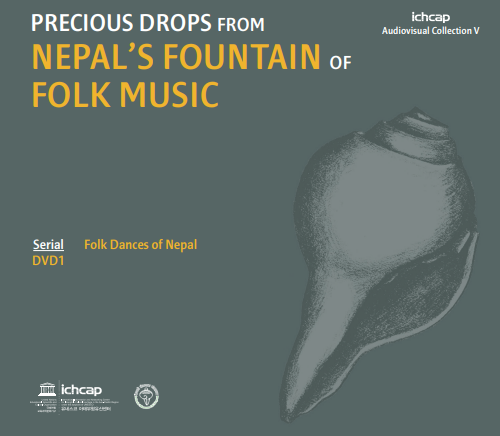 Folk Dance of Nepal_Mushar Naach
Folk Dance of Nepal_Mushar Naach
Folk Dance of Nepal_Mushar Naach\n\nPerformers: Chandra Bahadur Mahara, Chandra Hazara, Joshu Ram, Bhajan Paswan, Mahanga Paswan \nCaste: Musahr \nDate of Recording: 1998 \nCollector: Dan Bahadur Nepali\n\nNepalese communities express their emotions through the rhythms of various folk dances. Folk dances, in fact, are an inseparable part of rural life. On the other hand, the religious influence can easily be observed in the songs and dances, which are often performed to please deities responsible for the well-being of humans and cattle, favorable climate, and good harvest. As the country has widely differing topographical features, so does it have vast variances in cultural aspects. Folk songs and dances depend on cultures, cas-tes, seasons, and geographical features. For example, a sherpa living in the Himalayan region sings and dances differently from a Tharu living in the Terai region. Similarly, songs and dances performed in the spring season express joyous emotions, whereas those performed in the winter season express sadness. This collection includes the most famous folk dances of the different indigenous communities of Nepal dwelling in various environments. These dances are a part of their daily life.\n\nMushar is a unique caste residing in various districts of the Terai region of Nepal, including Saptari, Siraha, Udaipur, Dhanusa, Janakpur, Morang, Sarlahi, Malangwa, Mahottari, Gaur, Rautahat, and Sunsari. This group has its own culture and tradition. Netwa is the most popular dance for festivals in their society. Here, dancers are seen wearing traditional attire. This dance is performed during special festivals, at birth ceremonies, wedding ceremonies, on the ninth day of Dashain, and other occasions. Five male artists take part in this dance. The rhythms are initiated by the guru (the master). Epics, stories about gods, the origin of earth, and life and family issues are the main topics of the song. It is performed either as a solo or in a duet. This dance is in vulnerable condition.\n
Nepal
1998